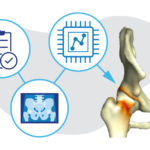Teens aren’t small adults: Rethinking surgical treatment of adolescent clavicle fracture

Until about 15 years ago, most clavicle fractures were allowed to heal with minimal medical intervention. That changed after a 2007 study reported better shoulder function after plate-fixation surgery. Although the study participants were adults, the rate of surgical treatment subsequently increased across all age groups.
Now, a landmark study at Boston Children’s Hospital demonstrates that in adolescents, treating clavicle fractures with surgery carries more risks than non-operative treatment and does not appear to offer clear benefits over non-operative treatment. The study, published in the American Journal of Sports Medicine, could mark another shift in the care of clavicle fractures in adolescents, the sub-population most affected by this injury.
From unanswered questions to FACTS
While the 2007 study demonstrated that adults who underwent surgery for clavicle fractures had fewer complications, it left the question of adolescent outcomes unanswered.
“As the pendulum shifted to more surgeries for clavicle fractures, pediatric orthopedists weren’t sure whether the study results were applicable to their adolescent patients,” says Benton Heyworth, MD, of Boston Children’s Orthopedic Center.
The lack of adolescent-specific evidence became the driving force behind FACTS (Function after Adolescent Clavicle Fracture Trauma and Surgery), a multicenter study group of eight pediatric hospitals including Boston Children’s. By pooling their data, members of FACTS gained the ability to study larger groups of adolescents with fractured clavicles.
Adult protocol increases risk for adolescents
The landmark study compared outcomes of operative and non-operative treatment for clavicle fractures in patients between the ages of 10 and 18. (The study went on to receive a research award from the Pediatric Orthopaedic Society of North America (POSNA).)
Each of the 416 study participants had received treatment for a completely displaced midshaft clavicle fracture at one of the eight FACTS hospitals. Within that group, 282 patients completed long-term follow-up surveys: 88 had undergone surgery and 194 were treated without surgery.
Two years after treatment, patient-reported outcomes in both groups showed no difference in shoulder function, quality of life, satisfaction, or prevention of complications commonly reported in adults. Operative treatment, however, proved to carry significantly greater risks for adolescents.
Study participants treated with surgery reported:
- significantly more unexpected subsequent surgeries, most involving implant removal after the hardware became painful
- significantly more clinically significant complications, including implant irritation and wound issues
Operative treatment also cost more. A related, unpublished study shows the cost of operative treatment of clavicle fractures in adolescents to be 19 times higher than non-operative treatment.
How adult and adolescent clavicle fractures differ
In adults, the two most significant complications of non-operative treatment are nonunion (the bone doesn’t heal) and symptomatic malunion (the bone heals out of alignment and impairs mobility and function). Either of these issues, which occur in 15 percent and 10 percent of adult patients respectively, may require surgery.
In adolescents, by contrast, the risk of failed bone healing is exceedingly rare. Whether or not they underwent surgery, less than 1 percent of adolescent study participants experienced nonunion and less than 2 percent experienced malunion. Moreover, even in these rare cases, adolescent patients often responded to other non-operative interventions, such as physical therapy, and did not require surgery.
“Due to their younger age, adolescents have a greater healing capacity and greater ability to return to normal function at high activity levels than their adult counterparts with similar fractures,” says Heyworth.
In other words, treatment protocols for adult clavicle fracture do not necessarily apply to adolescents. However, recommending minimal treatment for a broken clavicle may take a leap of faith for many pediatric orthopedic surgeons.
“It doesn’t seem intuitive when you look at an x-ray of a broken bone,” says Heyworth. “But now we have the science to back up that recommendation: Adolescent clavicle fractures generally heal just as well without surgery. And, compared to surgical treatment, non-operative treatment carries fewer risks, which might be the most important consideration for us in taking care of these young patients.”
Learn more about the Orthopedic Center, Sports Medicine Division, and our research highlights.
Related Posts :
-

Nerve block and a way out of pain after surgery
If she hadn’t dislocated her knee severely when she was 13, Paige Thornton probably wouldn’t have such strong feelings ...
-

AI could change the way we look at hip preservation
Orthopedic surgeons and biomedical engineers are trained to approach adolescent and young adult hip pain from two different perspectives. Surgeons ...
-

Innovative flatfoot surgery releases Quinn's inner athlete
By the time he was 10, Quinn’s parents had tried almost everything. Dawn would sometimes massage his feet to ...
-

From Toronto to Boston: Osteochondritis dissecans, hockey, and hope
Hockey is a fast and physical sport. Players need to think and act quickly as their team members, opponents, and ...





